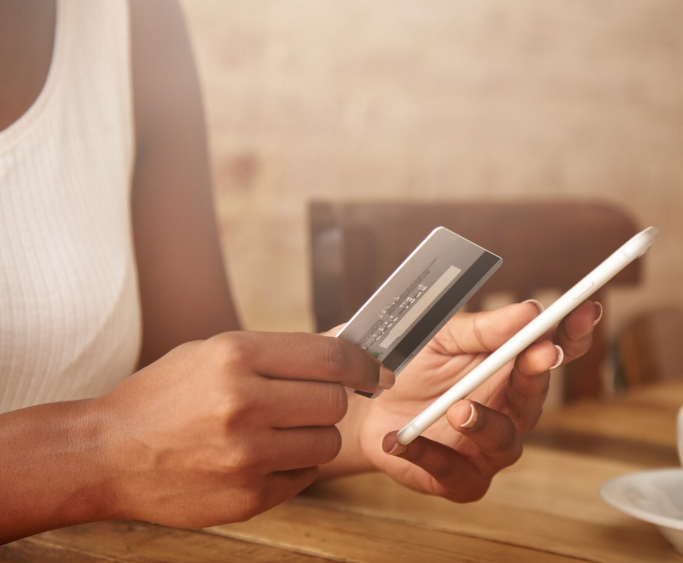Contactless payments have rapidly evolved from a convenient option to a preferred method of transaction for millions of Americans. With advancements in technology and a growing demand for fast, secure, and touch-free payment methods, credit card companies in the U.S. have embraced contactless solutions, transforming the way consumers and businesses interact. Let’s explore the rise of contactless payments and its implications for U.S. credit card users.
What Are Contactless Payments?
Contactless payments enable consumers to make purchases by simply tapping or waving their credit cards, smartphones, or wearable devices over a compatible terminal. This method leverages Near Field Communication (NFC) or Radio Frequency Identification (RFID) technology to process transactions securely without physical contact.
Most major credit card issuers, including Visa, Mastercard, American Express, and Discover, now offer cards equipped with NFC technology, making it easier than ever for users to pay on the go.
Why Contactless Payments Are Gaining Popularity
Several factors have contributed to the rapid adoption of contactless payments in the U.S.:
- Speed and Convenience: Transactions are completed in seconds, eliminating the need to insert a chip card or swipe a magnetic stripe.
- Enhanced Hygiene: The COVID-19 pandemic heightened awareness about touch-free payment options, driving adoption among health-conscious consumers.
- Widespread Acceptance: An increasing number of retailers now support contactless payments, from coffee shops to transit systems.
- Compatibility with Digital Wallets: Integration with services like Apple Pay, Google Pay, and Samsung Pay adds an additional layer of convenience for smartphone users.
Benefits of Contactless Payments for Credit Card Users
For U.S. credit card holders, the rise of contactless payments brings several key advantages:
1. Faster Checkout Experiences
Contactless payments reduce transaction times, making them ideal for busy settings like grocery stores, public transportation, and drive-thrus. Consumers no longer need to fumble with cash or wait for chip readers to process their purchases.
2. Enhanced Security
Contactless payments use advanced encryption methods, such as tokenization, which replaces card details with a unique code during each transaction. This makes it significantly harder for fraudsters to intercept sensitive information.
Additionally, contactless cards and devices often require close proximity to a terminal—typically within 1–2 inches—making accidental or unauthorized transactions highly unlikely.
3. Seamless Integration with Rewards Programs
Credit card rewards programs, such as cashback, travel points, or discounts, function seamlessly with contactless transactions. This means users can continue earning benefits without changing their habits.
4. No Added Cost
Unlike some premium payment features, most contactless cards come with no additional fees for using the tap-to-pay functionality, providing added convenience at no extra cost.
Challenges and Considerations
While contactless payments offer numerous benefits, there are a few considerations for credit card users:
1. Merchant Acceptance
Although acceptance is growing, some smaller businesses may still lack the infrastructure to support contactless payments. Users should be prepared with alternative payment options in such cases.
2. Perceived Security Concerns
Some consumers worry about potential security risks, such as “skimming” or unauthorized transactions. However, these risks are minimal due to NFC’s short range and encryption protocols.
3. Adoption Barriers Among Older Users
Older generations may be slower to adopt contactless payments due to unfamiliarity with the technology or a preference for traditional payment methods. Educational efforts can help bridge this gap.
The Future of Contactless Payments
The future of contactless payments in the U.S. looks promising, with several trends shaping its continued growth:
1. Expansion of Acceptance Points
More retailers, transit systems, and service providers are upgrading their infrastructure to accept contactless payments, ensuring wider usability.
2. Integration with Emerging Technologies
Wearable devices, such as smartwatches and fitness trackers, are increasingly equipped with payment capabilities, adding even more convenience for users.
3. Biometric Authentication
Biometric features, such as fingerprint or facial recognition, are being integrated into contactless payment methods to enhance security further.
4. Increased Use in Everyday Transactions
As consumers grow more accustomed to contactless payments, they are likely to use them for a broader range of purchases, from small-ticket items to recurring bills.
How to Get Started with Contactless Payments
For U.S. credit card users looking to adopt contactless payments, the process is simple:
- Check Your Card: Look for the contactless symbol (a series of four curved lines) on your credit card.
- Upgrade If Necessary: Contact your credit card issuer to request a contactless card if yours doesn’t already have NFC capabilities.
- Set Up Digital Wallets: Link your card to mobile payment platforms like Apple Pay or Google Pay for added convenience.
- Find Contactless Terminals: Look for the contactless symbol at checkout to identify compatible payment points.
Conclusion
The rise of contactless payments is revolutionizing the way U.S. credit card users pay for goods and services. By combining speed, security, and convenience, this technology is paving the way for a more efficient and user-friendly payment experience. As adoption continues to grow, contactless payments are poised to become the standard for everyday transactions, reshaping commerce for consumers and businesses alike.
With its promise of fast, secure, and hassle-free payments, contactless technology is not just the future—it’s already here.

